“Common Unity” in Mexico City wins 2018 MCHAP.emerge award
By Justine Testado|
Friday, Apr 13, 2018
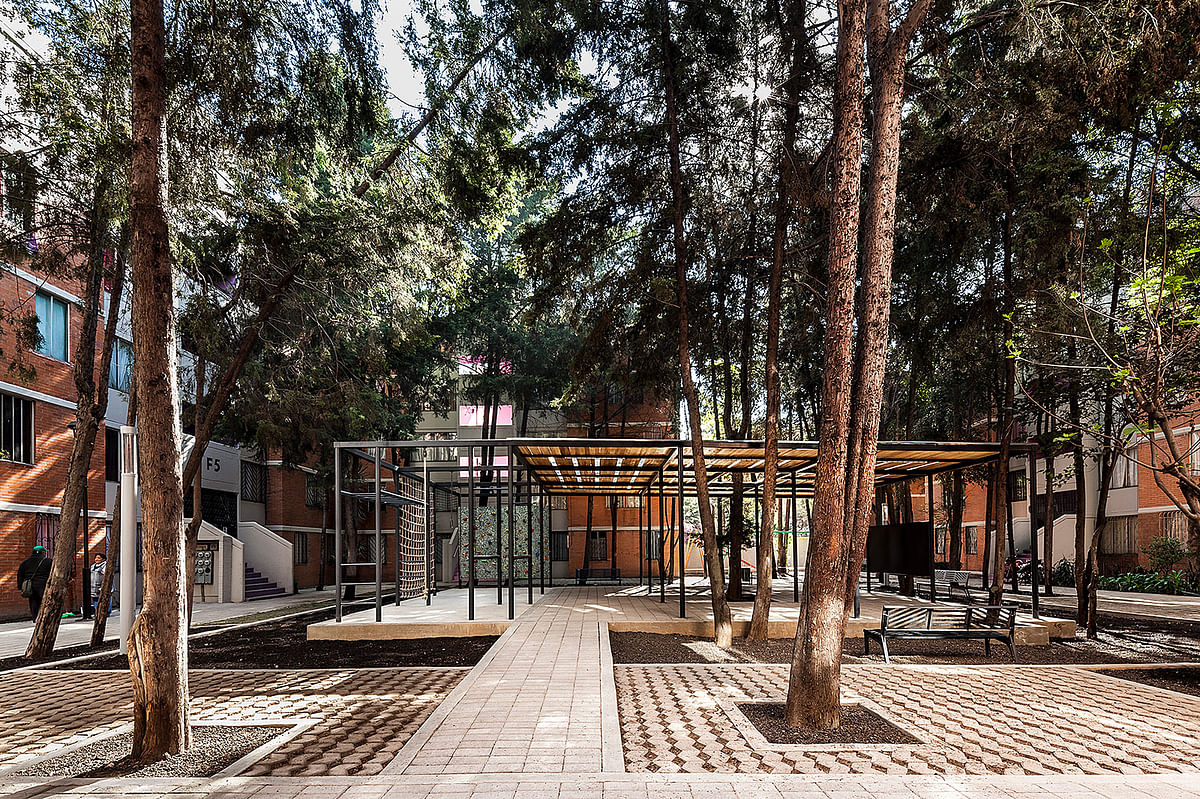
Related
As one of four finalists, “Common Unity” by Rozana Montiel Estudio de Arquitectura and Alin V. Wallach was revealed as the 2018 MCHAP.emerge winner during the MCHAP.emerge Symposium and Award Dinner at the IIT College of Architecture last night. As part of the biennial MCHAP award competition, the MCHAP.emerge award recognizes an outstanding built work in the Americas by an emerging architecture practice.
The Common Unity project is located in Mexico City's San Pablo Xalpa housing unit, which accommodates approximately 7,000 inhabitants, and where zoning and accesses have been altered through the fences and barriers that inhabitants built over time. Working around these barriers, Common Unity is an intervention that creates an open, communal space at the heart of the housing unit where the surrounding community can gather. The project's mission was to “build trust through design,” the design team describes.
Last year, Common Unity was a winner in the Archmarathon Awards and Rozana Montiel received the 2017 Moira Gemmill Prize from the Architects' Journal.
Read more project info from the design team below.
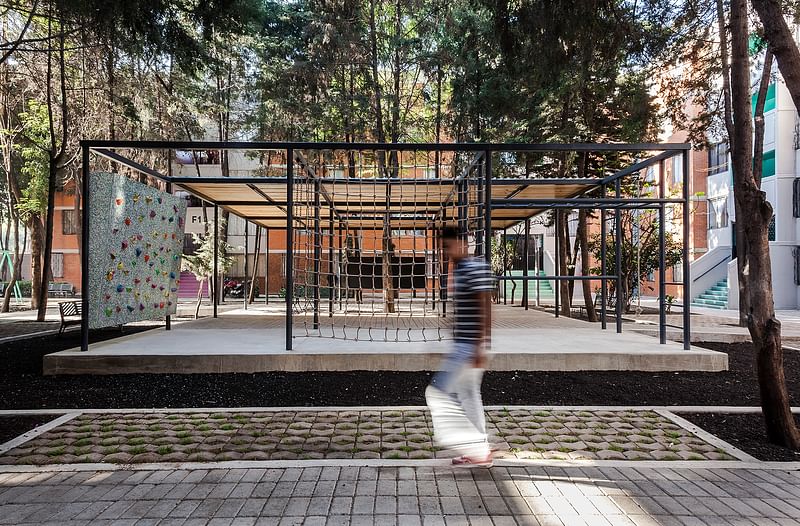
“We worked around the barriers created by the inhabitants in order to make them permeable, democratic and meaningful. One of our design strategies to reclaim privatized spaces for public use was to shift the vertical (railing, walls, gates, enclosures) which separate and divide for the horizontal (roof, shelter, floors, passageway) that connects, reunites, and encourages community interaction,” the design team describes.
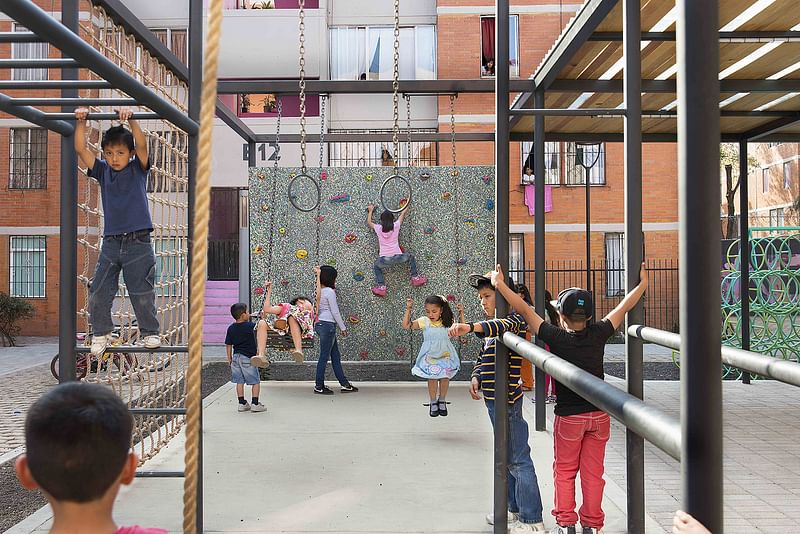
“The horizontal became more than just a roof: by expanding the program of potential activities in common areas through compact multi-functional structures, our COMMON-UNITY project gathered the community under the same roof. The design of the new space spoke for itself: people willingly gave up 90% of the barriers. Rehabilitating public space restored the community’s use of it, transforming the UNIT into COMMON-UNITY.”
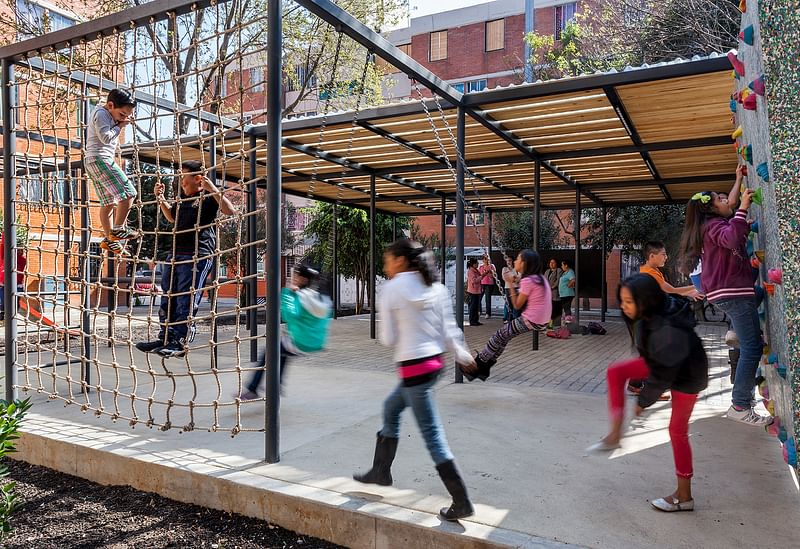
“The recovered public space in Xalpa became an extension of each apartment, while it remained free to the public. The real-estate value of the apartments doubled: the apartments surrounding the rehabilitated areas acquired the added value of community life. Safety was achieved through design.”
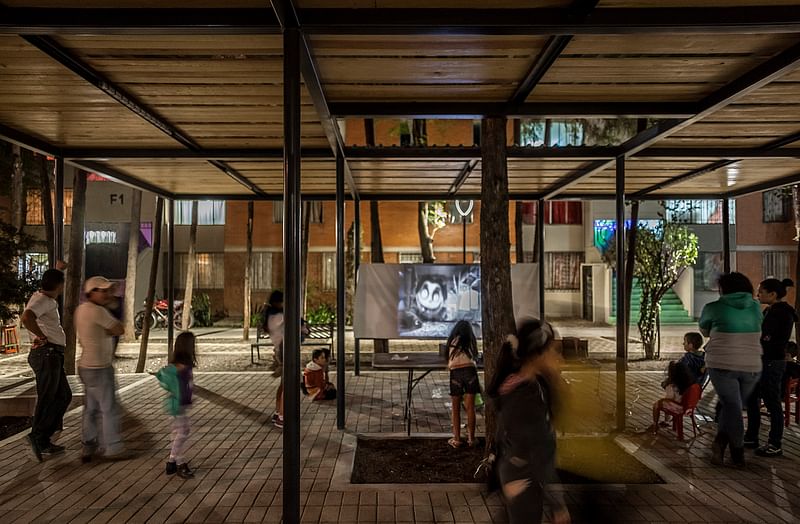
“It was extremely important to design with the community and not just for the community through the implementation of what we call SITE-ACTIONS. We term site-action a public space intervention designed to involve users in creative ways in order to free space from preconceptions: change begins with a shift of perception. The resulting spaces are filled with life and constant community activity...”
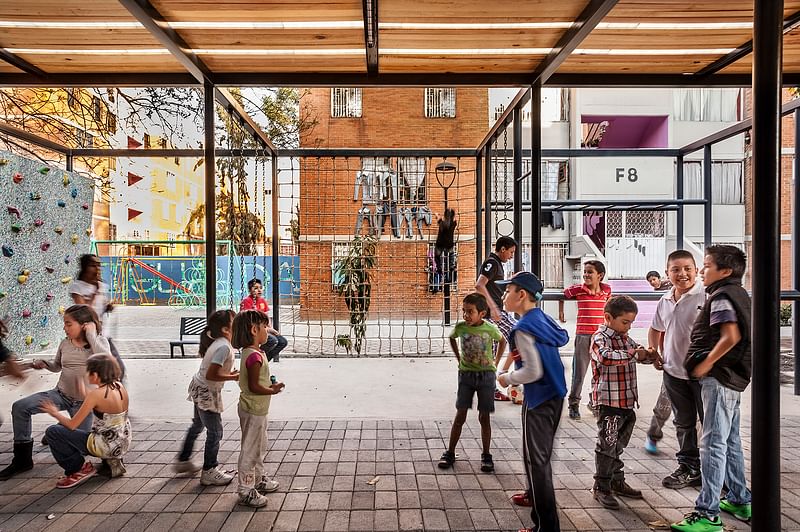
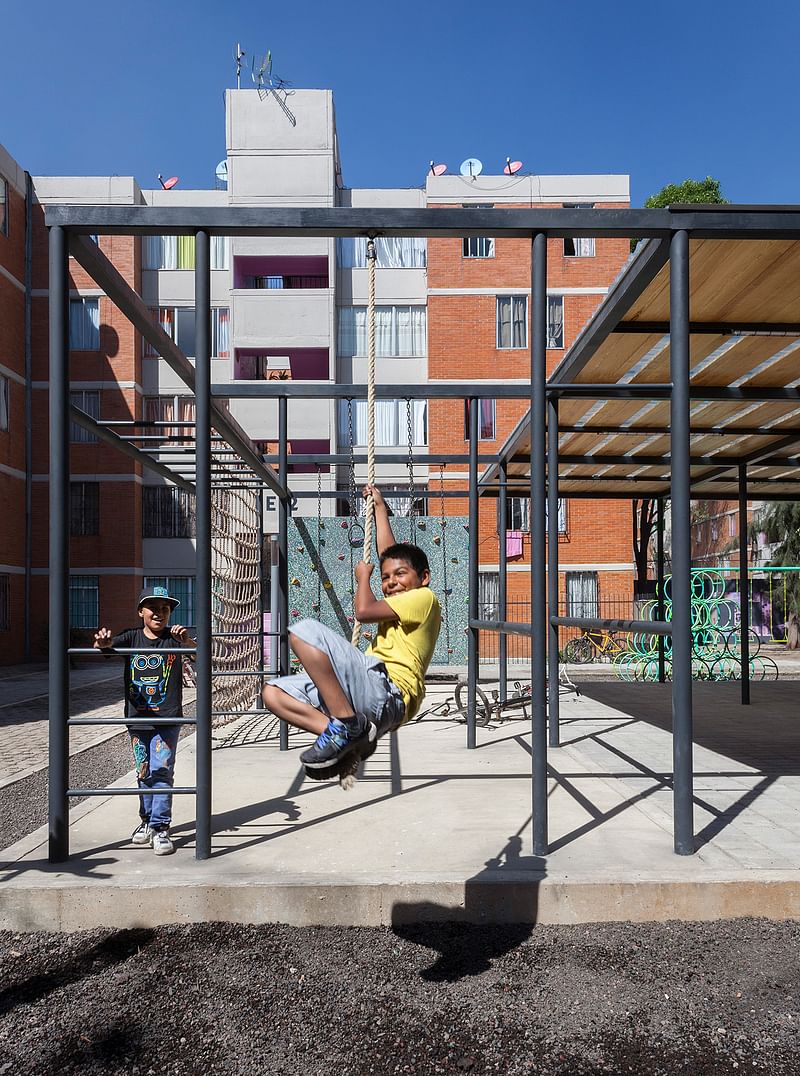
The architects added roofs with panels that provided blackboards, climbing walls, nets, handrails, ropes, rings, and monkey bars. The architects also transformed an old, leaky shed into a new, light-filled library and reading room called El Saloncito. These days, the project provides a welcoming area — plus free Wi-Fi — where people can attend classes and host various social activities, from movie nights to knitting clubs to religious celebrations.


“Rehabilitating and recovering public space had the immediate and continuing impact of safety by giving the spaces character and qualities that had been missing for decades,” commented jury member Claire Weisz. “The space is unified by a plaza that floats just above the ground composed of permeable areas for the existing trees, concrete areas that are raised which become bridges and decks under the light steel structures that offer shade and frames for interpretation. These spatial moves serve to enlarge the usable area while at the same time still creating spaces for small gatherings and individual activities. The urban design is both the resulting activated and valuable public space, the programs and spaces that didn’t formerly exist and the design of a social process — all in one project.”

RELATED NEWS The four finalists of the 2018 Mies Crown Hall Americas Prize for Emerging Architecture

RELATED NEWS Productora wins 2016 MCHAP.emerge Award with Pavilion on the Zocalo

RELATED NEWS Rozana Montiel + Alin V. Wallach, WORKac, SO – IL among 2017 Archmarathon Award winners


Share
1 Comment
Rick Long · Apr 13, 18 11:23 PM
cool
Comment as :